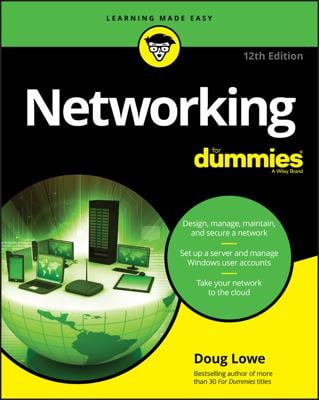Configure your router to make your network complete. You need to configure the router so that it can communicate with your network components. Fortunately, the configuration steps are rather straightforward.
After you connect the router to the network, or simply turn on a wireless router, you connect to the router by using your PC’s Web browser, such as Internet Explorer. The documentation that came with the router gives you the router’s Web page address. Usually, it’s numerical, such as
http://192.168.0.1/
After accessing the router, and (optionally) entering its password, you see a Web page displayed. The Web page is really the router’s configuration program. Follow the directions that came with the device for the basic configuration of the router. In addition to those directions, consider the following points:
Enable the router’s firewall. You don’t need to adjust the firewall; most routers set things up just as you need them.
Set a Service Set Identifier, or SSID, for your wireless network. This is the name by which the wireless network is known.
Set the encryption for the network, known as the WEP, or Wired Equivalent Privacy. Make sure that you note the password! It’s a long string of numbers and letters, and you must enter it exactly to access the network.
You may hear or read that the password is optional, but generally, it’s not. Don’t compromise your network by omitting the password. In fact, Windows may not even connect to a wireless network that lacks a password.
(Optional) Configure the base station to allow connections only from known computers. You specify this setting by listing the MAC address of the wireless Ethernet adapter in each PC.
Tell the wireless router to provide IP addresses dynamically for all computers on the network. This is also known as Dynamic Host Configuration Protocol (DHCP).
The most important pieces of information you need when configuring a wireless router are the SSID and the long, cryptic password, which you need to access the network. You should write those things down and keep them in a safe place.

